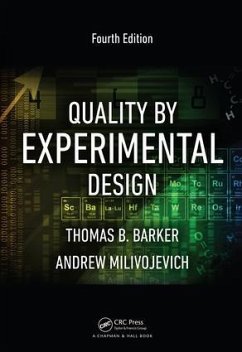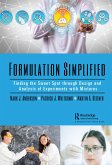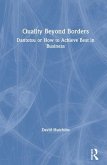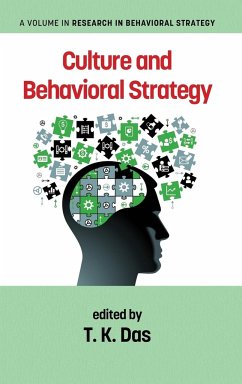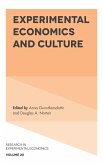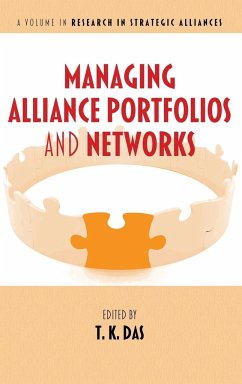This bestseller shows how to design and analyze experiments statistically, drive process and product innovation, and improve productivity. It presents an approach to experimentation that assesses many factors, builds predictive models, and verifies the models. This fourth edition contains four new chapters on mixture experiments, updated computer programs used to perform simulations, and additional exercises. With its easy-to-read, conversational style, the text is suitable for any course in applied statistical experimental design or in a Six Sigma program.
Praise for the Third Edition:
"With a healthy dosage of exclamatory sentences and unique analogies (one even involving Robin Hood and Friar Tuck) in the first pages of the book, the author does not fail to meet expectations."
-Robert G. McLeod, Journal of Quality Technology, Vol. 38, No. 4, October 2006
"What distinguishes this book from other introductory texts in experimental design is its writing style. The book maintains a conversational tone throughout, presenting equations and mathematical derivations only when absolutely necessary. Reading it gives the feeling of attending a seminar or chatting with an expert about a specific topic ... The author clearly relishes this approach, and it often works well, making the chapters easy and quick to read and understand. It also has the advantage of appealing to math-phobic readers and anyone trying to avoid feeling lectured. Quality by Experimental Design has a lively style and enough tantalizing material that, I hope, will make beginners in statistics, and practitioners in other engineering areas, interested in picking up more advanced books to get a deeper look at the application of statistically designed experiments to quality control problems."
-Alejandro Heredia-Langner, Technometrics, Vol. 48, No. 4, November 2006
"... an invaluable text ... presents a wide variety of techniques and innovative methods for designing and conducting experiments with an expectation of acquiring actionable knowledge. ... material is presented in a progressive way that thoughtfully discusses and illustrates proven experimental methods that may be employed to make informed decisions."
-Hank Altland, Retired, Corning, Inc.
"The book is an introduction to the theory of experimental design for practitioners. ... The different methods and models are illustrated by a large number of examples and exercises taken from practice. For finding the solutions of the problems, the software package Minitab is used. Application of the methods is supported by various templates and worksheets."
-Zentralblatt MATH, 1088
"This third edition takes the positive aspects of the first edition and adds to them. ... a well-written book that can be used for your own reference or as a text."
-From the Foreword by John T. Burr, Assistant Professor, Center for Quality and Applied Statistics, Rochester Institute of Technology
"With a healthy dosage of exclamatory sentences and unique analogies (one even involving Robin Hood and Friar Tuck) in the first pages of the book, the author does not fail to meet expectations."
-Robert G. McLeod, Journal of Quality Technology, Vol. 38, No. 4, October 2006
"What distinguishes this book from other introductory texts in experimental design is its writing style. The book maintains a conversational tone throughout, presenting equations and mathematical derivations only when absolutely necessary. Reading it gives the feeling of attending a seminar or chatting with an expert about a specific topic ... The author clearly relishes this approach, and it often works well, making the chapters easy and quick to read and understand. It also has the advantage of appealing to math-phobic readers and anyone trying to avoid feeling lectured. Quality by Experimental Design has a lively style and enough tantalizing material that, I hope, will make beginners in statistics, and practitioners in other engineering areas, interested in picking up more advanced books to get a deeper look at the application of statistically designed experiments to quality control problems."
-Alejandro Heredia-Langner, Technometrics, Vol. 48, No. 4, November 2006
"... an invaluable text ... presents a wide variety of techniques and innovative methods for designing and conducting experiments with an expectation of acquiring actionable knowledge. ... material is presented in a progressive way that thoughtfully discusses and illustrates proven experimental methods that may be employed to make informed decisions."
-Hank Altland, Retired, Corning, Inc.
"The book is an introduction to the theory of experimental design for practitioners. ... The different methods and models are illustrated by a large number of examples and exercises taken from practice. For finding the solutions of the problems, the software package Minitab is used. Application of the methods is supported by various templates and worksheets."
-Zentralblatt MATH, 1088
"This third edition takes the positive aspects of the first edition and adds to them. ... a well-written book that can be used for your own reference or as a text."
-From the Foreword by John T. Burr, Assistant Professor, Center for Quality and Applied Statistics, Rochester Institute of Technology

